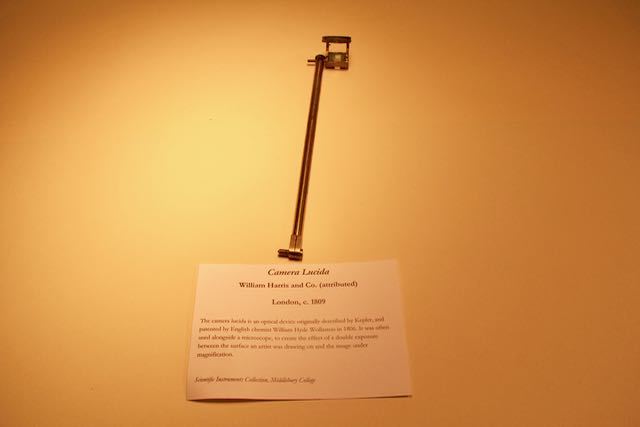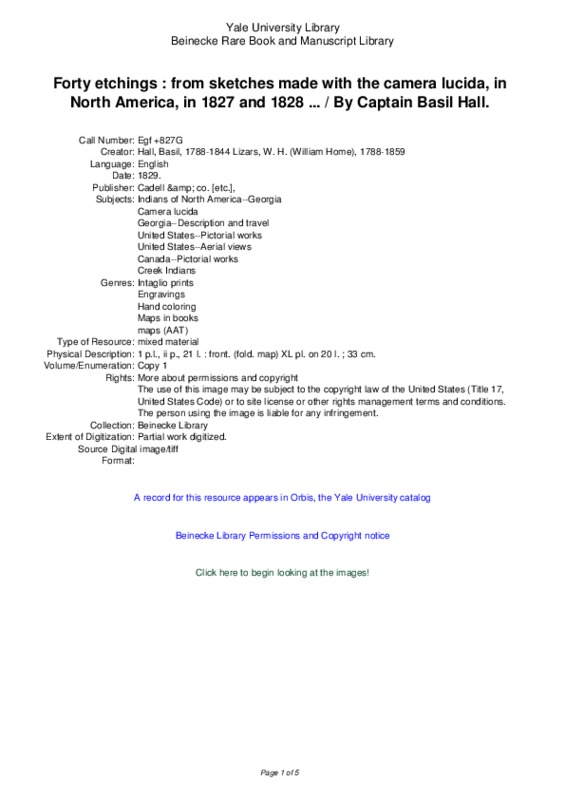Camera Lucida, where it came from, what it does.
Selected from Hall’s collection of scientific instruments brought over from Europe, this device is called the Camera Lucida. An instruction manual for the instrument released by G. Dolland of London, Optician to the King, provides the following description of the object: “An Instrument for drawing in true perspective, and for copying, reducing or enlarging other drawings” (Dolland page 1). This particular Camera Lucida was made in London in 1809 by William Harris and Co. The device is used to make accurate scientific drawings. Instead of just observing and free handing the object, the camera lucida’s special prism lenses let the observer superimpose an image of the specimen down onto the paper. This outline can then be traced. The tool was commonly used to get the exact detail of botanical drawings and insect drawings and even aided in perspective with landscapes and figures. For examples of quick sketches of landscapes, see attached drawings of Captain Basil Hall’s expedition west (Hall).


